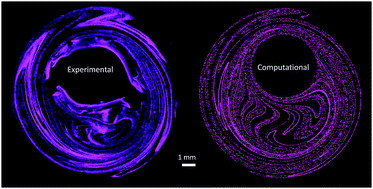当前位置:
X-MOL 学术
›
Mater. Horiz.
›
论文详情
Our official English website, www.x-mol.net, welcomes your
feedback! (Note: you will need to create a separate account there.)
Chaotic printing: using chaos to fabricate densely packed micro- and nanostructures at high resolution and speed†
Materials Horizons ( IF 12.2 ) Pub Date : 2018-07-03 00:00:00 , DOI: 10.1039/c8mh00344k Grissel Trujillo-de Santiago 1, 2, 3, 4 , Mario Moisés Alvarez 1, 2, 3, 4 , Mohamadmahdi Samandari 1, 2, 5 , Gyan Prakash 1, 2 , Gouri Chandrabhatla 1, 2 , Pamela Inés Rellstab-Sánchez 1, 2, 4 , Batzaya Byambaa 1, 2 , Parisa Pour Shahid Saeed Abadi 1, 2 , Serena Mandla 1, 2, 6 , Reginald K Avery 1, 2, 7 , Alejandro Vallejo-Arroyo 1, 2, 4 , Amir Nasajpour 1, 2, 8, 9 , Nasim Annabi 1, 2, 8, 10 , Yu Shrike Zhang 1, 2 , Ali Khademhosseini 1, 2, 6, 8, 9, 11, 12, 13, 14
Materials Horizons ( IF 12.2 ) Pub Date : 2018-07-03 00:00:00 , DOI: 10.1039/c8mh00344k Grissel Trujillo-de Santiago 1, 2, 3, 4 , Mario Moisés Alvarez 1, 2, 3, 4 , Mohamadmahdi Samandari 1, 2, 5 , Gyan Prakash 1, 2 , Gouri Chandrabhatla 1, 2 , Pamela Inés Rellstab-Sánchez 1, 2, 4 , Batzaya Byambaa 1, 2 , Parisa Pour Shahid Saeed Abadi 1, 2 , Serena Mandla 1, 2, 6 , Reginald K Avery 1, 2, 7 , Alejandro Vallejo-Arroyo 1, 2, 4 , Amir Nasajpour 1, 2, 8, 9 , Nasim Annabi 1, 2, 8, 10 , Yu Shrike Zhang 1, 2 , Ali Khademhosseini 1, 2, 6, 8, 9, 11, 12, 13, 14
Affiliation

|
Nature generates densely packed micro- and nanostructures to enable key functionalities in cells, tissues, and other materials. Current fabrication techniques, due to limitations in resolution and speed, are far less effective at creating microstructures. Yet, the development of extensive amounts of surface area per unit volume will enable applications and manufacturing strategies not possible today. Here, we introduce chaotic printing—the use of chaotic flows for the rapid generation of complex, high-resolution microstructures. A simple and deterministic chaotic flow is induced in a viscous liquid, and its repeated stretching and folding action deforms an “ink” (i.e., a drop of a miscible liquid, fluorescent beads, or cells) at an exponential rate to render a densely packed lamellar microstructure that is then preserved by curing or photocrosslinking. This exponentially fast creation of fine microstructures exceeds the limits of resolution and speed of the currently available 3D printing techniques. Moreover, we show that the architecture of the microstructure to be created with chaotic printing can be predicted by mathematical modelling. We envision diverse applications for this technology, including the development of densely packed catalytic surfaces and highly complex multi-lamellar and multi-component tissue-like structures for biomedical and electronics applications.
中文翻译:

混沌打印:利用混沌以高分辨率和速度制造密集的微米和纳米结构†
大自然会产生密集的微米和纳米结构,以实现细胞、组织和其他材料的关键功能。由于分辨率和速度的限制,当前的制造技术在创建微结构方面的效率要低得多。然而,每单位体积的大量表面积的发展将使当今不可能的应用和制造策略成为可能。在这里,我们介绍混沌打印——利用混沌流快速生成复杂、高分辨率的微观结构。在粘性液体中引发简单且确定性的混沌流,其重复的拉伸和折叠动作使“墨水”(即一滴可混溶液体、荧光珠或细胞)以指数速率变形,从而呈现出紧密堆积的状态。然后通过固化或光交联保留层状微结构。这种精细微结构的快速创建超出了当前可用 3D 打印技术的分辨率和速度限制。此外,我们还表明,可以通过数学建模来预测用混沌打印创建的微结构的架构。我们设想这项技术的多种应用,包括开发用于生物医学和电子应用的致密催化表面和高度复杂的多层和多组分组织状结构。
更新日期:2018-07-03
中文翻译:

混沌打印:利用混沌以高分辨率和速度制造密集的微米和纳米结构†
大自然会产生密集的微米和纳米结构,以实现细胞、组织和其他材料的关键功能。由于分辨率和速度的限制,当前的制造技术在创建微结构方面的效率要低得多。然而,每单位体积的大量表面积的发展将使当今不可能的应用和制造策略成为可能。在这里,我们介绍混沌打印——利用混沌流快速生成复杂、高分辨率的微观结构。在粘性液体中引发简单且确定性的混沌流,其重复的拉伸和折叠动作使“墨水”(即一滴可混溶液体、荧光珠或细胞)以指数速率变形,从而呈现出紧密堆积的状态。然后通过固化或光交联保留层状微结构。这种精细微结构的快速创建超出了当前可用 3D 打印技术的分辨率和速度限制。此外,我们还表明,可以通过数学建模来预测用混沌打印创建的微结构的架构。我们设想这项技术的多种应用,包括开发用于生物医学和电子应用的致密催化表面和高度复杂的多层和多组分组织状结构。











































 京公网安备 11010802027423号
京公网安备 11010802027423号